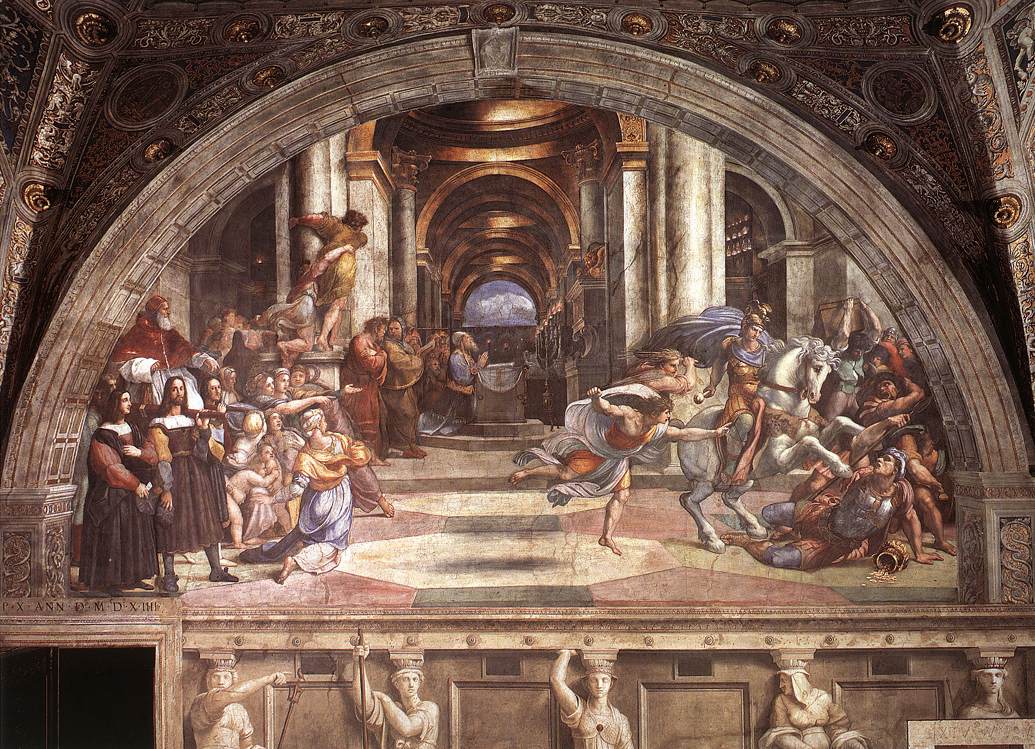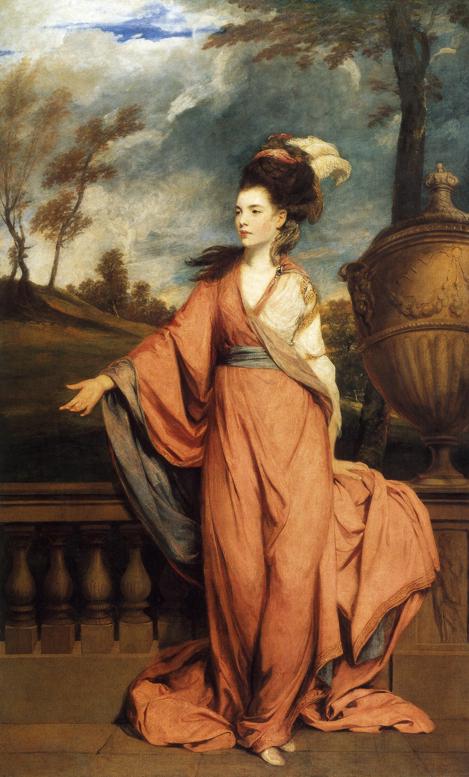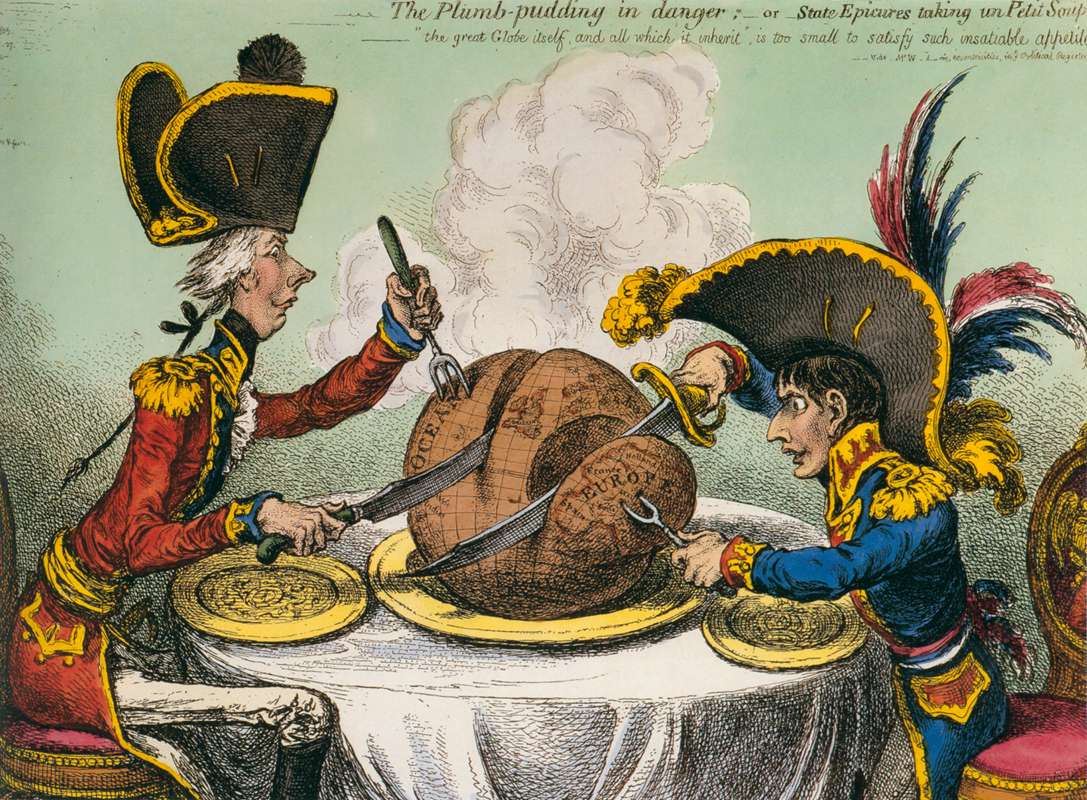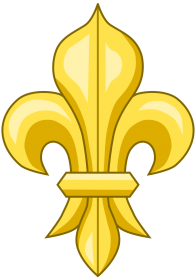Jargons of the art world is a popular series explaining the difficult terms and jargons used in the art world since the renaissance period. We have reached article number 8 in the series and here are the 10 new jargons explained in simple way.
1. Grand Manner
Grand Manner, in simple terms, means the subject getting highly emphasized through factual changes, grandeur settings, special poses or overall grandeur composition to make the whole scene/subject look majestic or magnificent.
Grand Manner is said to be a part of History Paintings primitively and later on was also used in Portrait Paintings. Here are two examples in both scenarios. First in History Painting:
The Expulsion of Heliodorus from the Temple by Raphael from Vatican and is said to be the Original Grand Manner.
In Portrait paintings, as said above, the sitter is give emphasize by great setting or pose. Also, when used Grand Manner in portrait painting, the subject is always depicted life-size and in full length. Perfect example is this:
Jane, Countess of Harrington by Joshua Reynolds, 1778.
The same artist, Joshua Reynolds, a prominent eighteenth century English painter, is said to be prominently promoting the art style in his series of lectures called Discourses of Art. You can see more of Joshua Reynolds’ artworks here.
2. Caricature
A caricature is a simplified art work, drawing or painting, mainly portrait paintings. Cartoons in newspapers are the famous examples of a caricature work in which politicians, filmstars or other notable people or incidents are mocked. Caricature are used to express a single side, agenda or trait of the situation or person. Thus, simplifying it extremely to relay a single message. Here is the most famous cartoon caricature in UK’s history:
The Plumb Pudding in Danger by James Gillray
The caricature represents Napoleon and William Pitt the Younger slicing the earth in which Napoleon is having the Europe and Pitt is getting other half of the world. The caricature, simplifying things, only uses some clues to clarify who two figures are and also the depicted instance of slicing the earth is simplistically representing their brutal and ambitious efforts of taking over the world.
If you are getting your own caricature made by a street-artist, you will notice that the artist isn’t including the important details but taking the overall clues which would make the picture resembling to your face. It doesn’t’ need to be factually or realistically accurate as far as it delivers what was initially intended. Thus, simplifying the artwork to deliver a single, minimal message. Here is a great example:
3. Fleur-de-lis
Fluer de Lis is a stylized flower of lily which is used in many ways in France across religious, military, political, dynastic and artistic ways. It’s nearer to be a national symbol used everywhere it could be without any restriction. The symbol has been used in France for centuries. Here is the symbol:
In paintings, mostly the armors and shields of the soldiers and kings adhered this symbol.
Here is an Illuminated Manuscript with Fleur de Lis used in it:
Angel sending the Fluers de lis to Clovis
4. Mimesis
Mimesis could be said the general theme of art and artists no matter what art we are talking about. Specifically, mimesis represents the very act of artists mimicking real or imaginary world and ideas into their art-pieces. It doesn’t mean copying. It means, that whatever artist thinks to be real (from his perspective) of the world around us or if he is using his imaginary world (more like Surrealist Painters) to represent our world, their ideas or making the pure depiction of that imaginary world without any connection to the reality (which is a very hard thing to accomplish as idea springs from a bit of reality, no matter how remote the connection seems to be), the artist, at the essence is mimicking his thoughts, portraying or pouring his thoughts into the art-form he has chosen. That’s the very trick, method or ability of an artist, which if mastered, could result in excellent art-pieces never before accomplished.
There couldn’t be any specific example for Mimesis in painting as every painting (and therefore, every art-piece in the world) has the act of mimesis in the creative process. For the sake of an example, lets put a painting forth which really required some excruciating efforts of the artist to mimic his thoughts, ideas and imagination on the canvas:
The Garden of Earthly Delights by Hieronymus Bosch
5. Art Colony
An Art Colony is a place where artists are invited or decide to live together for certain period of time to focus on their art, share ideas, improve and overall further the art in more than one way. An art colony gives the artist a freedom from the regular routine of their lives where they have to manage or adjust between the daily routine and their artistic freedom. Thus, an art-colony is a bless for any artist (of any sort) to freely work on improving their art and following their passion without the obstructions or worries of the routine workaday life.
Res Artis based in Amstardam and Alliance of Artists Communities on Rhode Island are the prominent organizations providing art colony services.
6. Art Commune
Art Commune is similar to art colonies. But, while art colonies gives homes to the specific artists, art communes, having open memberships, is a complex gathering of artists, drifters, collectivists and all sort of people interested into the main subject of any particular art commune. We can say, an art commune is more open, broader and extensive art colony with or without the facility of residencies.
7. Glaze
Glaze is a transparent layer of paint overpainted on an opaque painting to give it some shine and luminosity unachievable by the regular use of the opaque colors.
Today, Glazing a painting isn’t much of necessity as it was back in the day when the oil painting was prominent and needed some tricks and techniques to perfect the art-piece. It was also used to create the colors whose pigments weren’t possible to recreate artificially.
Glaze was also used to give a special feel to the painting as it gave the impression similar to a photograph behind a transparent glass-sheet. Glaze was just a way to enhance the feel and the impression of the subject.
Dutch artist, Johannes Vermeer glazed many of his paintings including Girl with a Pearl Earring.
8. Verdaccio
Verdaccio is a type of underpainting which is the initial layer of mostly paint foreshadowing the final painting in monochrome. While underpainting is used in most types of paintings, Verdaccio is specified for Fresco Paintings.
The Creation of Adam by Michaelangelo at Sistine Chapel
You can read more about requirement and importance of Underpainting in the link given above.
9. Faux Painting
Faux painting is a painting technique in which the tone of the paint and the style of application on the canvas is chose in a way to create a certain false appearance of a material, surface or texture.
Have you ever visited (or own) a house or building where the floor seems to be wooden yet those are ceramic tiles with wooden paint over them, just to appear as wooden floor. As seen below:
That’s not real wood. Just a tile painted to look like wood. That’s modern faux painting and is being used heavily in ceramic, textile and some other industries. In painting, it has been used to represent the accurate details of a carved wall, fabric or some other texture to provide it life-like feel. Fresco and Trompe l’oeil are said to be types of Faux Painting.
10. Stencil
A stencil is a piece of cardboard, plastic or metal with holes, patterns or designs cut out of it. It is then put on paper or canvas and the color is applied over it by brush or spray-paint through the holes and cuts. When the stencil removed, the canvas under it gets the paint pattern spread over it in the exact pattern or design which was cut out of the stencil.
Here is a video showing an artist using many stencils to create a piece of art:
Those were the ten new art jargons in the series. To read know more art jargons read the previous parts in the series of Jargons of the Art World: part 1, part 2, part 3, part 4, part 5, part 6 and part 7.
Source: Wikipedia

 (1 votes, average: 4.00 out of 5)
(1 votes, average: 4.00 out of 5)








